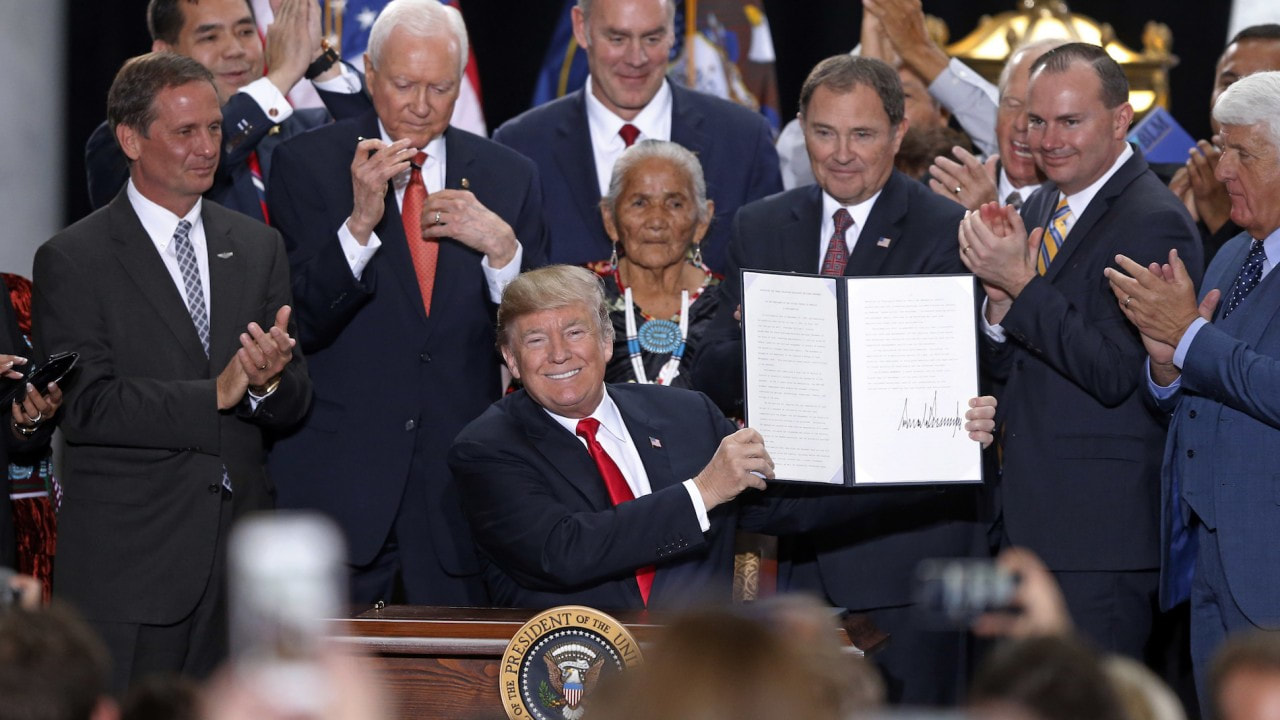|
Property is a fascinating thing, considering many wars waged throughout history have been fought over some form of property. It’s no surprise that President Trump’s recent announcement on two Utah national monuments’ reduction has riled people. But it wasn’t just Trump — the media has something to do with it. We analyzed four articles on the subject, and found each of them was slanted or gave a partial view of the information. Here are the three main distortions we found, and why they may limit the way we approach the information. Appeal to emotion CNN’s article starts with: If only the rocks could talk. If only the sandstones could sing, imagine the stories they’d tell, of dinosaurs, mammoth hunters and the “ancient ones” known as the Anasazi. All roamed southern Utah over the eons, long before Native Americans struggled to hold their land against Mormon settlers, modern life and now, Donald Trump. And it ends with: If you are an American, this is your land and these are your rocks. Pay them a visit sometime. You’ll be amazed at the stories they tell. The historical references and figurative, emotional language (spin) may play at our heartstrings, and hint at the cons of the measures. However, they don’t provide specifics to better understand possible upsides and downsides. The best way to evaluate the changes is through data, plain and simple. In CNN’s coverage, your opinion may already be swayed before you get to the facts it provides about the situation. Emphasizing partisanship Like the CNN article, BBC’s and The Washington Post’s coverage also promoted a negative bias about downsizing, although the Post did it with a twist. In its headline, the Post drew attention to partisanship by noting the “praise” and “protests” that followed Trump’s announcement. In its lead sentence, CNN noted that the two presidents who established the monuments in question are Democrats. Both points are accurate, but as readers, highlighting them puts partisanship on the radar at the start of the article. The rest continues in a similar fashion: Republican lawmakers pitted against activists’ protests in Utah and Washington; conservatives working to “curb” the president’s unilateral power in this area; competing interests between Utah locals and Native American tribes, and those of executives in the mining, ranching and oil and gas industries. It’s true that people have voiced differing opinions about the measures, and including these can be useful. However, it can be limiting to focus more on partisanship than information that could help evaluate the measure’s merits and possible consequences. Disproportional representation While The Daily Caller’s article was the least distorted of the four, it was still slanted. By giving greater weight to the Trump administration’s perspectives, compared to others’, this outlet suggested downsizing is good and in the best interest of Utah residents. Surely the four articles can’t all be correct? There are benefits and disadvantages to every decision, including the reductions in the size of these national monuments. Take a look at our Context to evaluate some of the possible pros and cons, and to see how Trump’s actions on this issue compare to his predecessors. Written by Ivy Nevares Edited by Ivy Nevares, Jens Erik Gould and Rosa Laura Junco Visit the original story on Knife Media’s website Follow us on Twitter @theknifemedia Follow us on LinkedIn Comments are closed.
|
Jens Erik GouldJens is a political, business and entertainment writer and editor who has reported from a dozen countries for media outlets including The New York Times, National Public Radio and Bloomberg News Archives
February 2018
Categories
All
|

 RSS Feed
RSS Feed